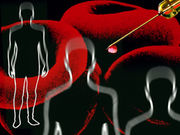New criteria identify adult patients likely to have poor outcomes typical of sepsis
MONDAY, Feb. 22, 2016 (HealthDay News) — New definitions and criteria for sepsis and septic shock have been published online Feb. 22 in the Journal of the American Medical Association to coincide with the Society of Critical Care Medicine’s 45th Critical Care Congress, held from Feb 20 to 24 in Orlando, Fla.
Mervyn Singer, M.D., from University College London, and colleagues examined definitions for sepsis and septic shock. A task force with 19 members was convened and generated definitions and clinical criteria.
The authors recommend that sepsis be defined as life-threatening organ dysfunction caused by a dysregulated host response to infection, concluding that the term severe sepsis is redundant. An increase in the Sequential [Sepsis-related] Organ Failure Assessment (SOFA) of 2 points or more, which correlated with in-hospital mortality >10 percent, represents organ dysfunction. Septic shock should be defined as a subset of sepsis, in which circulatory, cellular, and metabolic abnormalities correlate with increased risk of mortality versus sepsis alone. Adult patients are likely to have poor outcomes typical of sepsis if they meet two of the criteria that constitute a new clinical score (quickSOFA): respiratory rate of ≥22/min, altered mentation, or systolic blood pressure of ≤100 mm Hg.
“These updated definitions and clinical criteria should clarify long-used descriptors and facilitate earlier recognition and more timely management of patients with sepsis or at risk of developing it,” the authors write.
Copyright © 2016 HealthDay. All rights reserved.








